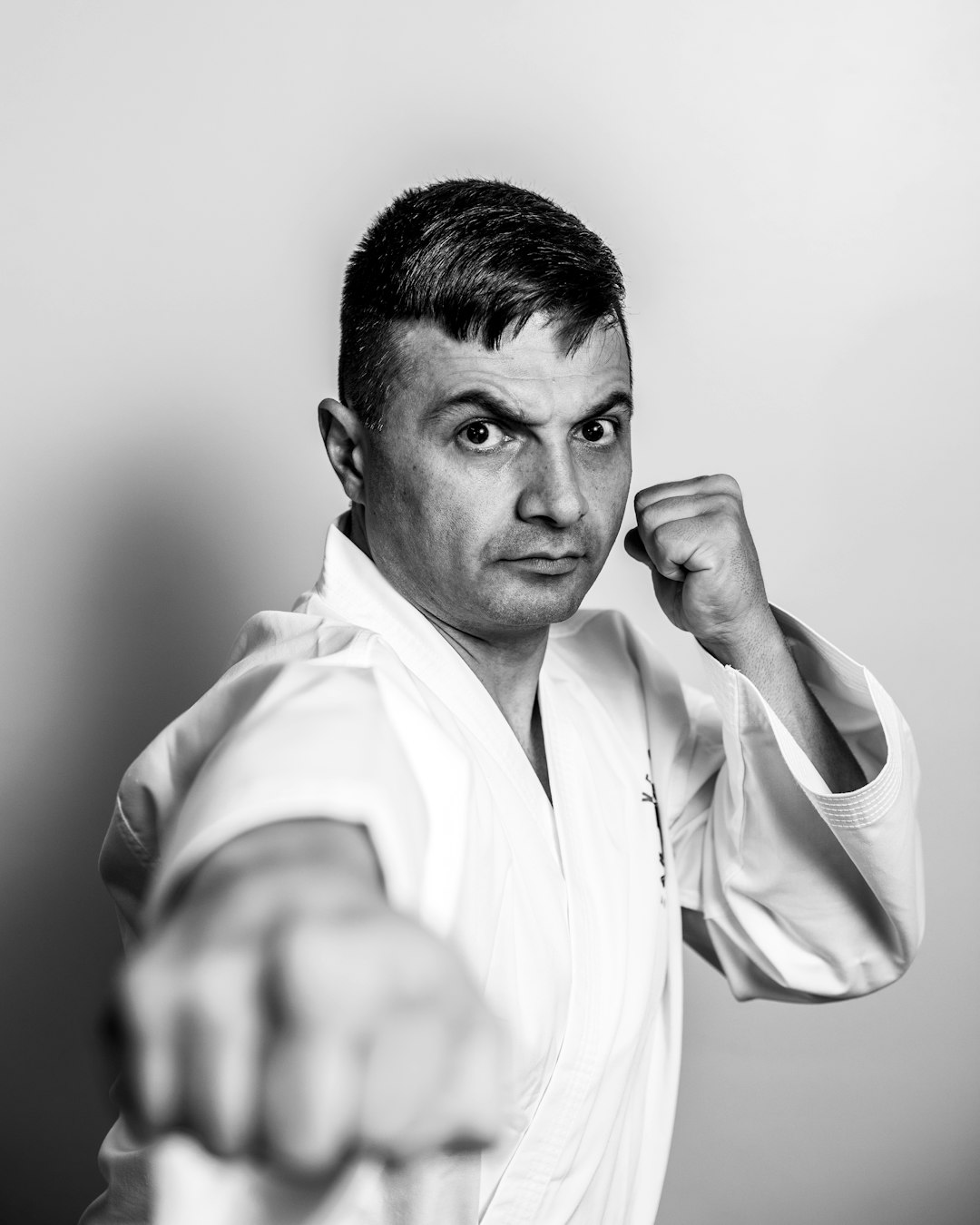The traditional karate uniform, known as a gi, is central to the practice of karate, serving both functional and symbolic purposes. It is a respectful nod to the martial art's traditions, typically composed of a jacket, trousers, and an obi, with variations in design across different styles like Shotokan, Shorin-ryu, and Goju-ryu. The gi's fabric, usually cotton or hemp, has evolved to include other materials, and modern versions often feature a pre-belted jacket for convenience as practitioners advance in rank. While the white gi is prevalent due to its symbolism of purity and humility, some schools opt for alternative colors to reflect their unique cultural or aesthetic values. It is important for karatekas to know the specific names of their uniforms to honor tradition and enhance their training experience. The gi's cut, length, and fabric thickness are tailored to each style, balancing functionality for mobility and durability for practice. Understanding these nuances ensures that practitioners maintain respect for karate's heritage while also optimizing their performance during training and competition.
Discover the origins and significance of traditional martial arts attire with our exploration into the karate outfit, commonly known as a Gi. This article unravels the essence of Karate uniforms, detailing their evolution and the myriad styles that have emerged over time. Whether you’re an enthusiast or practitioner looking to understand the karate uniform name and its significance within the sport, this guide is tailored to enlighten your martial journey.
- Understanding the Essentials of Karate Uniforms: A Guide to the Gi
- The Evolution and Style Variations of Karate Training Attire
Understanding the Essentials of Karate Uniforms: A Guide to the Gi

When exploring the discipline of karate, one may find themselves curious about the traditional attire that practitioners don – the karate uniform, commonly known as a gi. The gi serves as more than just a garment; it represents respect for the martial art and its traditions. Made of cotton or hemp fabric, the gi is characterized by its simple design, consisting of a jacket, trousers, belt (obi), and often a belt to tie the jacket closed. The specifics of the gi can vary slightly depending on the style of karate being practiced, as each may have its own nuances in terms of sizing, fit, and color. For instance, Shotokan karate practitioners typically wear a white gi, while other styles might use different colors for aesthetic or cultural reasons. Whether you are a beginner or an experienced karateka, understanding the karate uniform name is key to respecting the tradition and embracing the martitude of the sport. The standard garment for both training and competition, the gi allows for ease of movement while providing durability for the rigors of practice. Is it necessary to know the exact type of gi for each style of karate? Absolutely. Each style may have subtle differences in terms of the traditional uniform, which can include variations in the cut of the trousers, jacket length, and the thickness of the fabric. These distinctions are not merely aesthetic; they serve a functional purpose, ensuring that the wearer’s movements are both unencumbered and respectful to the martial art’s origins and principles.
The Evolution and Style Variations of Karate Training Attire

Karate practitioners, from beginners to seasoned martial artists, wear a distinct uniform that has evolved over time. The traditional karate outfit, known as a gi, shares similarities with other martial arts attire but also features unique characteristics that cater to the demands of the discipline. The gi typically consists of a jacket and trousers made of cotton or hemp, designed for both comfort and durability during practice. Over the years, the design of the karate uniform has undergone subtle changes, influenced by practical considerations and cultural shifts. Modern versions of the gi may include variations such as different weave materials or pre-belted jackets to accommodate growth in belt rank, reflecting the evolution from traditional to contemporary use.
Style variations of the karate uniform are prevalent, with each style often reflecting the regional influences and preferences of its practitioners. For instance, Shotokan karate gi tend to be more form-fitting compared to those used in Shorin-ryu or Goju-ryu styles, where a looser fit might be preferred for ease of movement. Additionally, the color of the gi can vary; white is the most common as it signifies purity and humility, but some schools may opt for different colors based on their specific traditions or rank designations. Regardless of the style, the karate uniform name remains consistent in its purpose: to provide a garment that is both functional for training and symbolic of the martial artist’s journey within the art of karate.
In wrapping up our exploration of the dynamic world of karate, one cannot overlook the significance of the practitioner’s attire—the karate uniform, or Gi. This article has delved into the essential elements that define a traditional Gi and its evolution over time, highlighting the style variations that cater to different schools of karate. Understanding the karate uniform name is key for both beginners and seasoned martial artists alike, as it reflects not only the discipline’s rich history but also its adaptability to modern practices. Whether on the dojo floor or in competitive settings, the Gi serves as a symbol of respect, tradition, and the relentless spirit of karateka worldwide.
